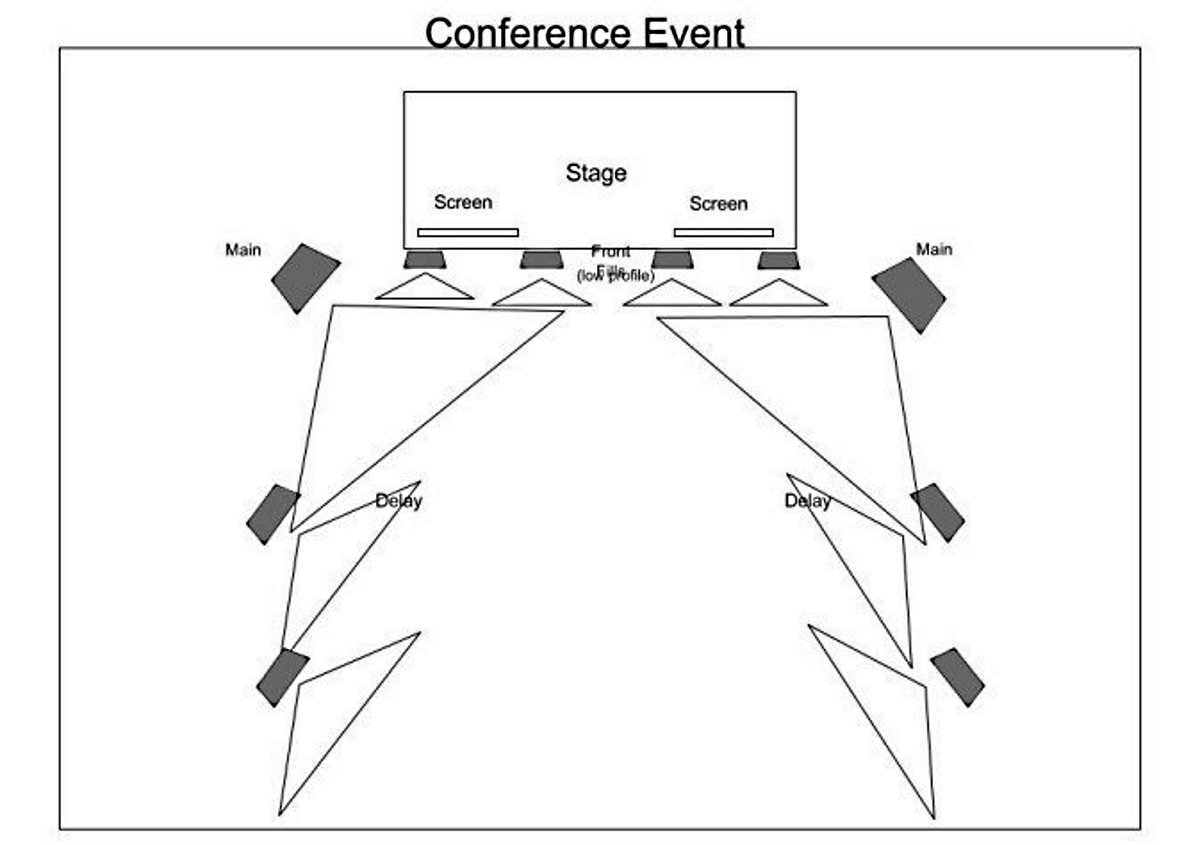
For conference gigs, however, this relationship is skewed.
To begin with, concerts are expected to be loud, and a big honkin’ PA filling the entire space is generally considered an enjoyable experience for the audience.
Conference gigs are not supposed to be loud. They mostly consist of people talking, and the audience wants to hear and understand them, not be awed by the power of their boss’s voice.
To rely on your mains for the bulk of the sound in a conference gig would require the mains to be really loud, which could be distracting, unpleasant, or even painful for the audience. So for conference gigs it’s helpful to think more in terms of zones.
You will still have your mains, but you won’t be trying to push air all the way to the back of the room, relying instead on more delays and fill speakers to provide even coverage at moderate listening levels.
Another reason that corporate gigs rely more on zones than on the mains is the primacy of sight lines over audio in the corporate world, which can sometimes require us to place our speakers in less than ideal spots.
With a concert the main purpose of screens flanking the stage is to show close-shots of the performance in real-time (sometimes called IMAG, or image magnification) and in such situations it’s OK if some of the audience doesn’t have a perfect view of the lead player’s guitar face.
Conversely, with corporate and conference events the screens exist for presentations, Powerpoints, and informative slides – If an audience member can’t see the screen, that audience member might miss the entire point of the presentation.
As such, our mains are often pushed way off to the side of these screens, leaving a giant gap in the front that must be addressed by front fill speakers. This also requires our mains to be toed-in to cover much of the seating area, so our delays must cover the outsides of the seating area more towards our front of house position. Often this can place a large number of seats in the delay speaker’s outside coverage area, necessitating even more delay speakers to cover those seats.
Astute observers among you might immediately think “…but all of those speakers separated by so much space, focused on the same area?! Won’t there be massive phase cancellation and comb filtering?” The process of time-aligning all of these speaker sets to counteract this comb filtering, along with other best practices for system tuning, will be discussed in the next post.
Fig. 2 depicts the same space as fig. 1, but this time set up for a conference gig.
Because the screens onstage portray vital content, sight lines cannot be blocked anywhere in the house. The mains are pushed off to the side, requiring more front fills to cover the larger gap between the mains.
The edges of the mains’ coverage area, where both volume and frequency response start to deteriorate, are now responsible for covering a larger number of seats than in the music concert.
The delays are now closer to the front to fill in this weak coverage zone. Now the edges of the first set of delays’ coverage zones are also covering a larger number of seats, so a second set of delays is brought in to compensate.
You can read and comment on the original article, as well as read additional posts in the series here.
This article was provided by Omega Studios.
